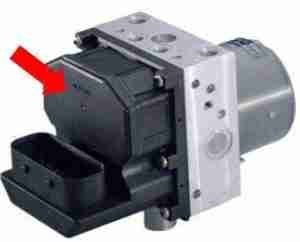The U0415 diagnostic trouble code (DTC) indicates a communication problem between the Anti-lock Brake System (ABS) control module and other vehicle control modules. This code signifies that invalid or implausible data is being received from the ABS module, potentially affecting braking performance and safety systems. This article will delve into the causes, symptoms, diagnosis, and potential solutions for the U0415 Code.
What Causes a U0415 Code?
Several factors can contribute to the U0415 code. These include:
-
Faulty ABS Control Module: A malfunctioning ABS module can send incorrect data or fail to communicate altogether, triggering the U0415 code. This is often the root cause but should be diagnosed thoroughly before replacement.
-
Wiring and Connector Issues: Damaged, corroded, or loose wiring and connectors in the ABS system can disrupt communication, leading to the U0415 code. A thorough inspection of the wiring harness is crucial.
-
Wheel Speed Sensor Problems: While not directly related to the ABS module itself, faulty wheel speed sensors can provide inaccurate data to the ABS module, resulting in the U0415 code. Testing these sensors for resistance and continuity is a vital diagnostic step.
-
Low Battery Voltage: A weak or failing battery can cause voltage fluctuations that disrupt communication between modules, potentially triggering the U0415 code.
-
Other Module Malfunctions: In rare cases, a malfunction in another control module that communicates with the ABS module can trigger the U0415 code.
 ABS Control Module Location
ABS Control Module Location
The ABS control module is typically located within the engine compartment, attached to the ABS pump and valve body. It’s usually identifiable by the multiple steel brake lines connected to it.
Symptoms of a U0415 Code
The U0415 code may manifest in various ways, including:
-
Illuminated ABS Warning Light: The most common symptom is the activation of the ABS warning light on the dashboard.
-
Other Warning Lights: Other warning lights, such as the traction control or stability control lights, might also illuminate.
-
Braking Issues: While less common, problems with ABS functionality, such as unexpected activation or deactivation, can occur.
-
Diagnostic Trouble Codes: Other related DTCs might be stored alongside the U0415 code, providing further diagnostic clues.
Diagnosing and Fixing a U0415 Code
Diagnosing the U0415 code requires a systematic approach:
-
Retrieve Diagnostic Trouble Codes: Use an OBD-II scanner to retrieve all stored codes, noting any codes related to the ABS system or other modules.
-
Inspect Wiring and Connectors: Thoroughly examine the ABS wiring harness for damage, corrosion, or loose connections. Repair or replace any faulty components.
-
Test Wheel Speed Sensors: Check the resistance and continuity of each wheel speed sensor using a multimeter. Replace any sensors that are out of specification.
-
Check Battery Voltage: Ensure the battery voltage is within the recommended range. Charge or replace a weak battery.
-
Test ABS Module: If other components check out, the ABS module itself may need testing or replacement. Consult a qualified mechanic with access to advanced diagnostic tools.
Common Mistakes When Diagnosing U0415
Avoid these common diagnostic pitfalls:
-
Overlooking Wiring Issues: A thorough wiring inspection is crucial, as even minor damage can disrupt communication.
-
Neglecting Wheel Speed Sensors: Faulty wheel speed sensors are a common cause and should be tested systematically.
-
Replacing Parts Without Proper Diagnosis: Don’t jump to conclusions. A systematic diagnosis should precede any part replacement.
Testing wheel speed sensors involves checking their resistance and continuity using a multimeter. This video provides a visual guide to the process: How to Test ABS sensors on Dodge Ram
Addressing the U0415 code promptly is essential for maintaining the safety and reliability of your vehicle’s braking system. If you are unsure about any diagnostic steps, consult a qualified mechanic for assistance.
